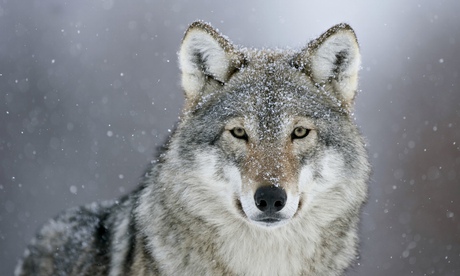How would reintroducing wolves and lynx back to Britain work, and what’s the point?
The Observer,

According to rewilding organisations, such as Rewilding Europe, to rescue this land we need to make ecosystems whole again, even if this means looking to the Pleistocene epoch (2.6m to 11,700 years ago) for inspiration. And here’s the thrilling part: if we want to return arable land to wild and reforest the uplands, we need to introduce the apex predators, such as lynx and wolves, that went with it.
If this all sounds a bit Game of Thrones, take Scotland as an example – deer have reached carrying capacity in many areas (the maximum population size that can be supported by the environment) and the intense browsing of trees prevents them from growing. Rewilding would reintroduce an apex predator to regulate the deer. In time the forest would regrow and the natural ecosystem be restored.
In some areas rewilding is up and running. In 1995 Yellowstone Park reintroduced the wolves 70 years after they had disappeared. A herd of bison (Europe’s largest mammals at 1,400lb per beast) has been established in the Romanian Carpathians in a project led by WWF Romania.
It might be biologically desirable, but rewilding lacks enthusiasm from farmers worrying about land used to grow food being turned over to beasts that may kill livestock. While ramblers don’t want tracts of land fenced off. The rewilders would like us to chill out, pointing out that while California has a cougar population of 4,000-6,000, interaction with humans is rare – and that many wolves run up and down Italy without incident.
In his book Feral: Rewilding the Land, Sea and Human Life, George Monbiot makes a brilliant case for a muscular form of rewilding that mixes activism, land restoration and community development. His vision is different from the biggest rewilding projects running in the UK. The Alladale Wilderness reserve, running a feasibility study on wolves, and the Knepp estate in Sussex, where a monoculture of wheat fields is being returned to the wild, are both privately owned, while Monbiot’s vision gives rewilding power to the people. My fear is that we’re too tame to embrace it.
source


No comments:
Post a Comment